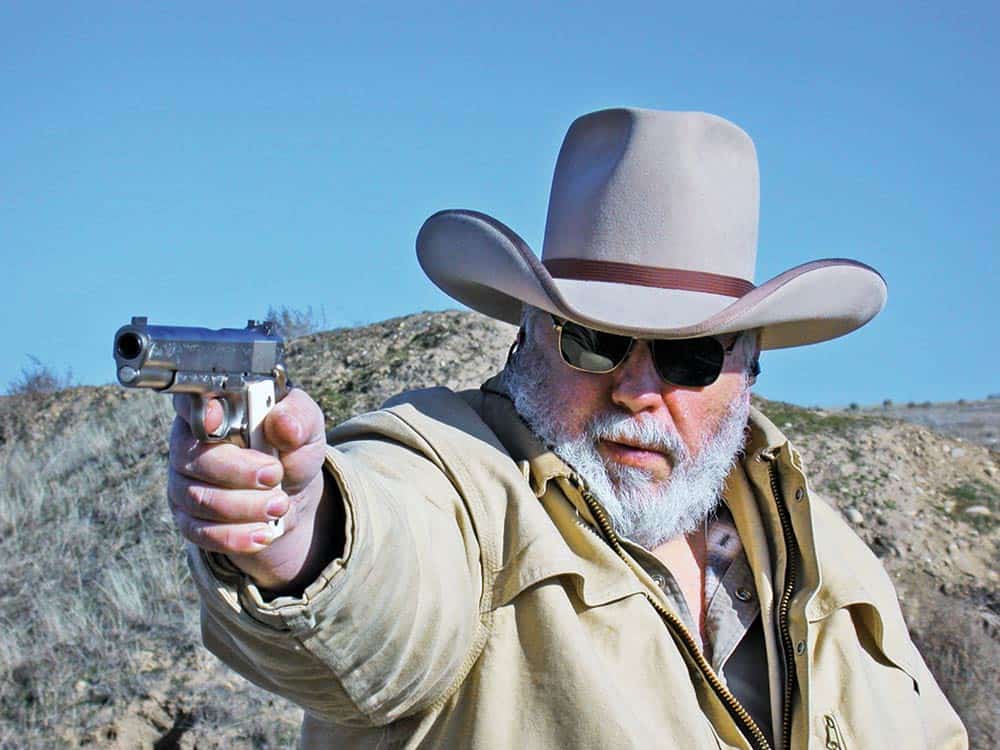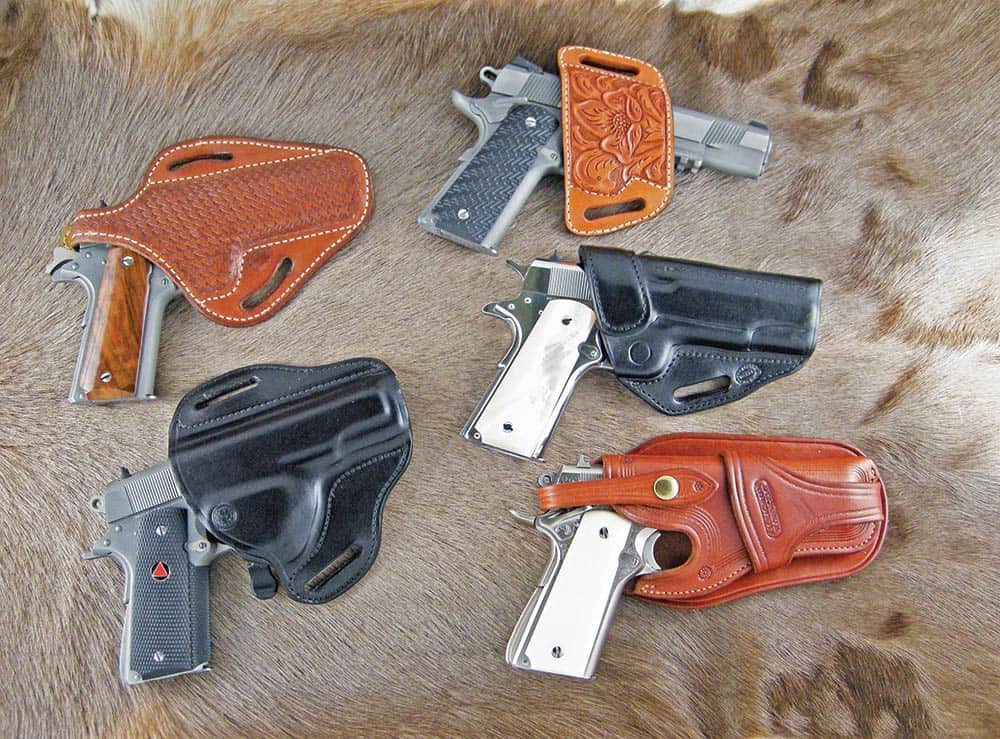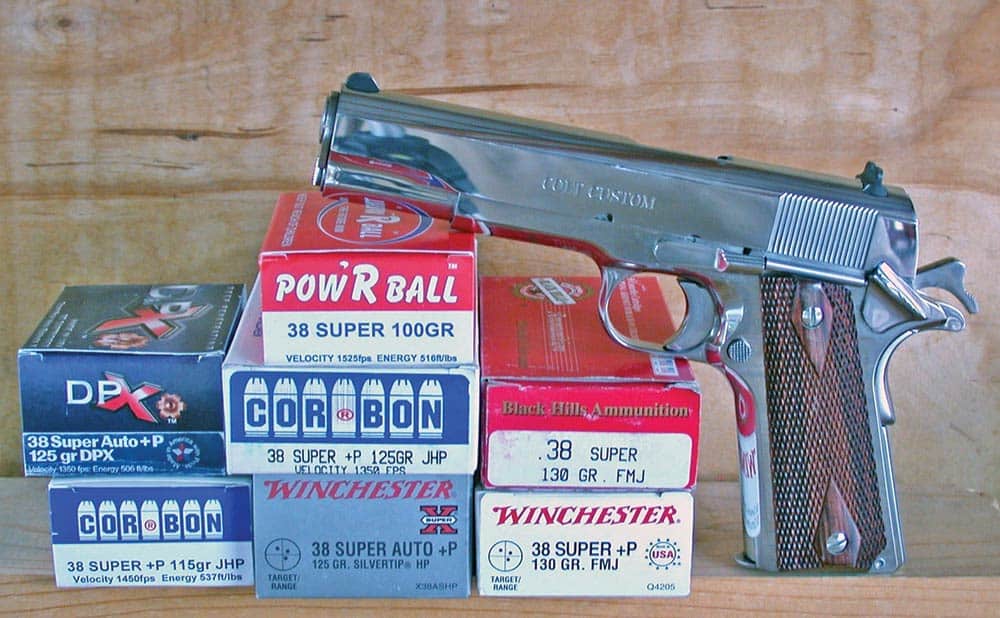Domestic Service
After WWI, Americans discovered the 1911. One of the first groups to adopt it — unofficially — was the Texas Rangers, or rather individual members thereof. Rangers could choose their own sidearm and I can remember pictures in issues of GUNS Magazine from the 1950s of Rangers like Clint Peoples and Bob Crowder armed with a pair of fully engraved, ivory-stocked Colt 1911s carried in floral carved holsters.
The original 1911 had very small sights (at least for my eyes), a hammer that would quite often bite the area of the back of the hand between the thumb and forefinger and a flat mainspring housing. In 1921 the 1911 became the 1911A1 with two minor changes. One of the complaints of the 1911 was it had a natural tendency to shoot low. To bring the pistol up naturally, the flat mainspring housing was given an arch that moved the hand back slightly. To compensate for this, the long trigger was shortened. Over the years, easier-to-see sights arrived and the tang on the grip safety was lengthened to help alleviate hammer bite (today this problem is mostly solved by a beavertail grip safety matched with a rounded-spur hammer). One other change often seen is an extended thumb safety. But all of the changes are minor and do nothing to affect the basic design of the .45.
In 1929 a second chambering was added to the 1911. Law enforcement needed better armament and the answer came from Colt as a Model 1911 chambered in the .38 Super cartridge. Colt had taken their existing .38 ACP, upped the powder charge and the result was a 130-gr. bullet at 1,300 fps capable of penetrating car bodies and windshields.
I find it most interesting Colt didn’t come up with a new cartridge case but simply used an older one even though the new loading was too hot for older guns. Apparently people were smarter in those days and had the ability to tell which cartridge went with which gun. Or then again, lawyers hadn’t gained control yet.
The .38 Super did what it was supposed to do. At the time, Colt’s John Henry Fitzgerald claimed it was not only more accurate at longer ranges than the .45 ACP, it was also more powerful at those yardages.
Today the 1911 is as popular — probably more so — than ever. There is a long list of gunsmiths who specialize in tuning and embellishing 1911’s along with many others who build their own versions of the 1911. In addition to the craftsmen there is a long list of manufacturers that now also build 1911’s. It is without a doubt the most copied semi-auto pistol in existence with just about every custom feature possible having been realized. There are now even custom 1911’s found retailing for $3,000 or more.
My shooting life with the 1911 began with a WWII surplus Remington-Rand 1911A1 purchased in the mid-1950s. It traveled with the family as we relocated from Ohio to Idaho and also rode with me for three summers as I traveled back and forth to the University of Montana Graduate School.
For normal everyday use I’ll take the 1911 chambered in .45 ACP or 9mm for self defense. I’d take it in 10mm or .38 Super for when my travels take me to the sagebrush, foothills, forests or mountains.
I don’t drive a 100-year-old car, I have a large flat screen TV, several computers and even carry a cell phone in my pickup for emergency use only. However, when it comes to handguns, the top of my list includes the same one available 100 years ago — the Colt 1911.
Sometimes “progress” is overrated.
Subscribe To GUNS Magazine











